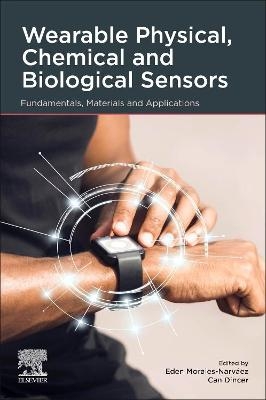
Wearable Physical, Chemical and Biological Sensors
Elsevier Science Publishing Co Inc (Verlag)
978-0-12-821661-3 (ISBN)
Eden Morales-Narváez is a Young Professor in the Department of Photonics and Head of the Biophotonic Nanosensors Laboratory at Centro de Investigaciones en Óptica (CIO), Mexico. He received a degree in Bionics Engineering from the National Polytechnic Institute of Mexico in 2006 and the Ph.D. degree in Biomedical Engineering from the Polytechnic University of Catalonia, Spain, in 2013. He was a Postdoctoral Researcher at Catalan Institute of Nanoscience and Nanotechnology and started his independent career in late 2016. His research is focused on novel (bio)sensing platforms, particularly using nanophotonics at the cutting-edge. He has published in leading scientific journals on Advanced Materials, Nanotechnology, Multidisciplinary Chemistry, Miniaturization, Biosensing and Wearable Devices. He is a Lecturer in Biophotonics and Photonic Materials at CIO. He also serves as an Editor to the Journal of Physics: Photonics, Biosensors (MDPI), and Frontiers (Nanobiotechnology and Biosensors and Biomolecular Electronics Sections). He has also been internationally recognized as an Emerging Leader 2020 by IOP Publishing. Can Dincer is currently Junior Research Group Leader at the FIT Freiburg Center for Interactive Materials and Bioinspired Technologies and the Department of Microsystems Engineering (IMTEK), University of Freiburg. His working group’s main research interests are the development of bioanalytical microsystems for various applications including diagnostics, especially wearables and point-of-care diagnostics, food and environmental monitoring. Having completed his studies in microsystems engineering, Dr. Dincer received a Ph.D. degree with summa cum laude from the University of Freiburg in 2016. In early 2017, he has been awarded the second place in Gips-Schüle Young Scientist Award for his dissertation. Between 2017 and 2019, Dr. Dincer also worked as a Visiting Researcher at the Department of Bioengineering, Imperial College London. In September 2019, he joined the editorial team of the journal Biosensors and Bioelectronics as an Associate Editor. In late 2019, Dr. Dincer received the Adolf Martens Prize in the category "Analytical Chemistry." In September 2020, he won the Best Paper Award 2020 of iba Heiligenstadt with his publication on the first CRISPR-powered electrochemical microfluidic biosensor in “Advanced Materials. Besides, in 2020, Dr. Dincer is also recognized within 25 early stage investigators advancing the field of sensor science in the Special Issue “Rising Stars in Sensing of the journal ACS Sensors.
1. Introduction 2. Materials for Wearable Sensors 3. Biorecognition Elements 4. Signal Detection Techniques 5. Signal Amplification Strategies 6. Healthcare Data Analytics for Wearable Sensors 7. Wearable Physical Sensors 8. Wearable Chemosensors 9. Wearable Biosensors 10. Wearable Hybrid Sensors 11. Smart Agriculture: Wearable Devices for Plant Protection 12. The Internet of Wearable Things 13. Conclusion and Future Perspectives
| Erscheinungsdatum | 02.12.2021 |
|---|---|
| Zusatzinfo | 140 illustrations (100 in full color); Illustrations |
| Sprache | englisch |
| Maße | 152 x 229 mm |
| Gewicht | 540 g |
| Themenwelt | Naturwissenschaften ► Chemie ► Analytische Chemie |
| ISBN-10 | 0-12-821661-1 / 0128216611 |
| ISBN-13 | 978-0-12-821661-3 / 9780128216613 |
| Zustand | Neuware |
| Informationen gemäß Produktsicherheitsverordnung (GPSR) | |
| Haben Sie eine Frage zum Produkt? |
aus dem Bereich


